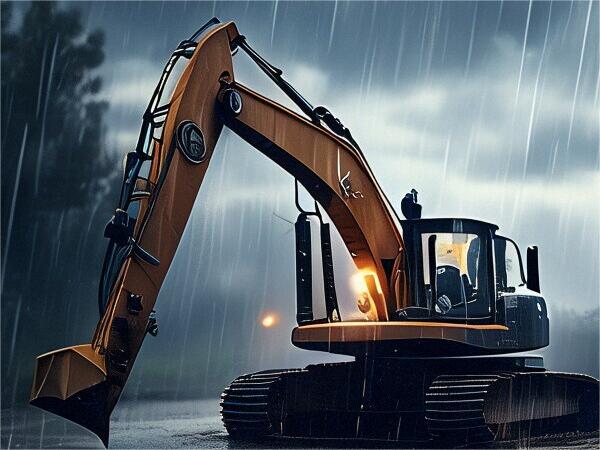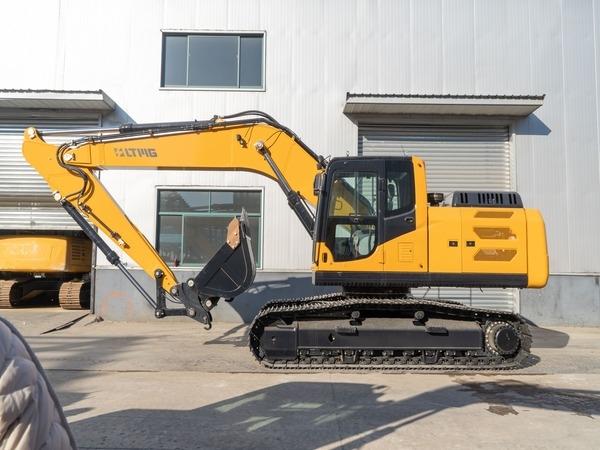Rainy Season Excavator Maintenance Guide
Jun 24, 2024
The rainy season poses a significant challenge to heavy equipment like excavators. Continuous rainfall and humid environments not only affect the excavator's operational efficiency but can also lead to severe mechanical damage. This article provides detailed instructions on how to protect and maintain your excavator during the rainy season to ensure it operates efficiently and safely.
1. Safe Parking Location
Elevated Parking
After completing work in the rainy season, the excavator should be parked in a high and firm location. This measure can effectively prevent the equipment from being damaged by landslides, mudslides, or flooding. Avoid low-lying areas and regions prone to landslides when choosing a parking spot to ensure the equipment is in a safe location.
Comprehensive Shutdown
After parking, ensure all doors and windows of the excavator are tightly closed to prevent rainwater from entering. Cut off the main power supply of the machine and check if the fuel tank and hydraulic oil tank caps are tightly sealed. Even if the water recedes, do not start the excavator immediately. First, hoist the equipment to a safe location for cleaning, then conduct thorough inspections and repairs of all systems.
2. Engine Section Inspection
Removing the Air Filter
First, check if the intake system has water. If there is water in the cylinder, disassemble the engine for thorough cleaning. Do not use the method of rotating the crankshaft to expel water from the cylinder liner through the injector hole, as this can damage the cylinder liner components.
Oil Inspection
Check the oil dipstick to see if the oil level has increased and whether the oil contains mud and water. The best approach is to disassemble the entire engine for repair. If this is not possible, perform partial disassembly and cleaning on the machine. After cleaning, replace the engine oil, oil filter, and other maintenance items with new ones to ensure normal engine operation.
Fuel Tank Inspection
If the fuel tank has water, first drain the water from the bottom of the tank. Let the diesel in the tank settle, then use it for cleaning. Wash the tank with water under certain pressure, wipe it clean with a cloth, especially the partitions and corners inside the tank. Finally, rinse the tank with diesel. Disassemble and clean the low-pressure and return lines from the tank to the fuel pump, and dry them with compressed air.
3. Hydraulic System and Transmission Components
Cleaning the Hydraulic System
The hydraulic oil tank is usually sealed. If mud and water get in, drain the oil and water from the tank, thoroughly clean the tank and pipelines, add new hydraulic oil, and replace the filter.
Inspecting the Hydraulic Pump
Loosen the drain screw on the hydraulic pump and check if the drained oil contains water. If there is no water, inspect the control valves and other components (including the hydraulic oil cooler). If no water is found, the main pump, high-pressure oil circuit, and working devices are considered normal.
4. Electrical Components and Circuits
Cleaning Electrical Equipment
Remove the starter, generator, and instrument panel from the excavator. Clean them with diesel and dry them thoroughly. Check the entire electrical circuit and connections for rust or damage. Grind off the rust or replace the relevant parts if necessary.
Startup Check
After cleaning and inspection, start the machine to test for any alarms. Test all working devices of the excavator to ensure they operate normally.
5. Routine Maintenance and Protection
Regular Inspections and Maintenance
During the rainy season, regular inspection and maintenance of the excavator are crucial. After each day's work, check for water ingress and damage in all parts of the equipment and perform timely maintenance.
Protective Measures
To prevent rainwater from eroding the excavator, consider building a shelter or using waterproof covers when parking. Minimize operations during heavy rain. If necessary, add extra protective measures during operations, such as waterproof cloths and mudguards.
Operational Precautions
When operating an excavator in the rainy season, the operator should pay special attention to the machine's operating status. Avoid prolonged work in deep water or muddy areas to prevent the equipment from getting stuck or waterlogged. Continuously monitor the equipment's indicators during operation and stop immediately for inspection if any abnormalities are detected.
Water Damage Handling
If the excavator is submerged, do not start the machine or turn on the main power switch. Hoist the equipment to a safe location, thoroughly clean all parts, and then inspect and repair. Ensure that electrical equipment and hydraulic systems are completely dry and free of water before restarting.
As your trusted excavator OEM partner, LTMG offers reliable technical advice and professional assistance to help you maintain your equipment, even in challenging conditions. Our quality machines are built for durability and efficiency, making them an excellent choice for your construction needs. Try LTMG excavators and experience dependable performance and support.

